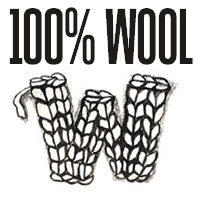Today for Wovember Words, we’re thrilled to tell you about a particular flock of Belgian Milk Sheep, kept by Barbara and Pete in the province of Luxembourg, in Acremont, Belgium. Researching this breed has been quite interesting; French, German and Dutch are all spoken in Belgium and, respectively, the breed is called brebis laitières belge; Belgische Milchschafe; and Belgische melkschapen. According to this site, this breed seems to be genetically influenced by Friesian Milk Sheep, and descended in part from Flemish sheep. Frisia includes parts of Germany and the Netherlands and, historically, the County of Flanders included parts of Belgium, France and the Netherlands. The Belgian Milk Sheep therefore has its roots in landscapes that we now think of as being several different European countries.
From sheep 101:
The Belgian Milk Sheep is a finely-built sheep which stands on high legs. The body is wedge-shaped. The head is covered with fine white hair. The abdomen is wooly, but slightly hairy. A typical characteristic of Belgium Milk Sheep is the so-called “rat-tail.” The fertility of the breed is high. The udder is well-developed and the animals give much milk with a creamy taste.
Barbara and Peter’s business is called Bergerie D’Acremont, and they keep a flock of over 250 sheep, from whose milk they make cheese. They also utilise the wool from their animals and are currently developing a wool workshop. They teach hand-spinning on request and have told team Wovember that their wool is extremely soft and therefore perfect for handicrafts. We love this video in which Peter is re-enacting medieval cheese production at a cheese festival held this year at Bouillon castle. We wrote to Bergerie D’Acremont on Facebook to inquire whether the wondrous knitted gilet he’s wearing is in fact made from the wool of their own sheep, and they confirmed that indeed it is.
You can read all about the cheese and wool (and ice-cream, ye gods!) of Barbara and Pete’s Belgian Milksheep on their website here and you can read the whole site in Dutch, English or French, as you prefer.
At Wovember HQ we often find ourselves drawing parallels between the organic and slow food movements, and some of the trends happily appearing in wool and slow fashion discourses. Many strategies that have worked for organic and slow food – telling origin stories; speaking of provenance and agricultural traditions; raising awareness of rare breeds; making fully traceable products etc. – have seemingly worked well for farmers who are selling meat and dairy products: why not also for wool, which is also an agricultural product? Many of the issues – particularly those around product miles, traceability, sustainability and animal and human welfare – are the same for both contexts. Whether you are eating it or wearing it, there is something fantastic about having a deeper sense of connection to the things that we use and consume.
We get especially excited when we find sheep breeds that are known both for wool and for cheese as this lends itself to the joyous prospect of getting to know a sheep breed especially well… and who doesn’t want to snack on breed-specific cheese while knitting with wool from the same? We hope you enjoy reading about the Belgische melkschapen, and would love if you could tell us in the comments about farms near you that are, like Bergerie D’Acremont in Belgium, utilising the wool from their animals as well as producing meat or dairy produce. Best of all, please share with us and other Wovember readers where cheese and wool from the same sheep breed may be jointly purchased for extremely happy knitting times!

